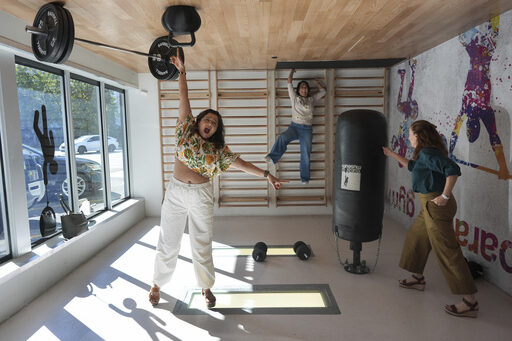MIAMI — The Paradox Museum Miami presents a unique blending of an art gallery, science exhibition, and a modern amusement house, inviting visitors to engage with various optical illusions and intriguing puzzles, perfect for the Instagram generation.
Occupying a spacious 11,000-square-foot area within the trendy Wynwood arts and entertainment district, the museum boasts over 70 exhibits designed to captivate the imagination, according to executive director Samantha Impellizeri.
“The experience oscillates between interactive and tactile exhibits and immersive photo zones where visitors become an integral part of the paradox, taking home some truly enjoyable and distinctive social media snapshots,” Impellizeri explained.
The Paradox Museum has expanded globally, with more than a dozen locations throughout North America, Europe, and Asia. The Miami venue, which opened its doors in 2022, was the first in North America, followed by openings in Las Vegas and New Jersey.
“Each paradox is crafted to resonate with its local community,” Impellizeri noted. “As you navigate through the experience, you’ll find various themes and artwork that are a direct reflection of Miami, and particularly the Wynwood community.”
Many exhibits in the museum draw inspiration from traditional carnival funhouses, featuring attractions like mirror mazes, spinning tunnels, and rooms constructed upside down. However, what sets the Paradox Museum apart is its focus on explaining the underlying mathematics and science of each illusion.
“We’ve become a go-to destination for school field trips that cater to students from pre-K up to college,” Impellizeri stated. “We offer a comprehensive educational program, including activities before, during, and after the visit to enhance learning.”
In keeping with the dynamic nature of museums, Paradox Museum has plans to regularly update its exhibits to keep the experience fresh for repeat visitors.
“We will look very different one to three years from now,” Impellizeri mentioned. “We are committed to integrating new technologies and adding new discoveries.”
Recently, the museum launched a Zero Gravity Room that adds to its array of attractions. Visitors can step into a large, slowly rotating vertical wheel designed to mirror a space station while placing their camera phones on a spinning mount. This setup allows videos to create the illusion of guests walking on walls and ceilings, reminiscent of “2001: A Space Odyssey.”
The emergence of Paradox Museum Miami is part of a broader trend of immersive art experiences that have gained popularity worldwide over the last decade. Other examples include Meow Wolf, with several locations in the western United States, and a captivating immersive Van Gogh exhibit touring various regions since 2017, as well as Superblue Miami, which opened in 2021, showcasing interactive art.
“Globally, immersive experiences are on the rise, and it’s thrilling to observe this surge in interactive displays that enable visitors to engage actively with the art and installations,” Impellizeri remarked.
Visitors typically spend between 60 to 90 minutes exploring the Paradox Museum, with ticket prices set at $26 for adults and teens, and $20 for children.
Facundo Ildarraz, 17, who recently visited Miami from Argentina with his family for a cruise, shared that they discovered the Paradox Museum online, and it became an excellent opportunity for memorable family photographs. “I’ve been laughing since we entered,” Ildarraz said. “It’s truly astonishing.”
Dennis Speigel, leading a consulting firm known as International Theme Park Services, Inc., commented that immersive experiences represent a natural advancement in the realm of location-based entertainment, akin to indoor skydiving and escape rooms. These smaller attractions typically occupy a few hours of visitors’ time, contrasting with the full-day commitments of traditional amusement parks.
“It’s an aggregation of various elements that we’ve utilized in the industry for years, enhanced by emerging technologies like augmented and virtual reality, providing fresh experiences that are unique,” Speigel explained. “It’s an evolution; the old has been revitalized.”
